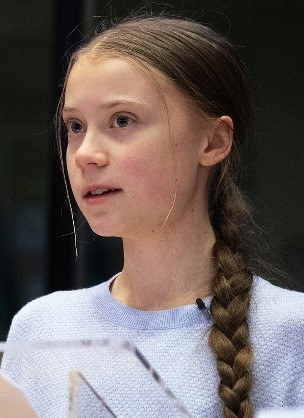Climate Change and Who Can Help
- Filed under "education"
- Published Thursday, December 9, 2021
- « back to articles

We’re hearing much discussion lately on the issue of climate change. It’s been in the forefront for several years, but this past year has marked the hottest year in the history of our planet. And although research shows that climate change didn’t directly cause recent fires, hurricanes, and other extreme weather events, it is intensifying them. In August, the Intergovernmental Panel on Climate Change issued a report with some devastating facts about the condition of our world and the effects of climate change, as indicated in graphics from the report:


It’s even more important to think about who is most affected by climate change and who can help find solutions. In both cases, the answer is women.
For females across the globe, vulnerability is a result of cultural, social, and economic factors including:
- 80% of people displaced by climate change are women.
- Women more often live in poverty, having less access to land, credit, environmental goods and services, technology, training, and other tools that can help one adapt to crises.
- In impoverished areas, women most often have the responsibility to get food, water, and energy resources for cooking, leaving them unable to focus on solutions.
- In disasters, women may be left with childcare responsibilities that prevent them from seeking refuge (during and after Hurricane Katrina, Black women were among the worst affected by flooding in Louisiana).
- Women’s health can be severely affected, as they are more susceptible to the harm of carbon dioxide released by coal-fired power plants; in fact 1 in 6 women of childbearing age now have unsafe levels of mercury in their blood.
- The United Nations reports higher rates of domestic and sexual violence, human trafficking, and child marriage due to climate change.
According to One Earth, a nonprofit focused on reducing climate change, women hold the key to solving the climate crisis. The reasons include the fact that women are better leaders in times of crisis. We’ve seen this throughout the COVID-19 pandemic – in a study of 194 countries, pandemic responses were systematically better in countries led by women, COVID-19 death rates were lower in states with female governors, and women in the corporate world scored significantly higher on a multitude of competencies (including taking initiative, motivating employees, communicating, and developing others).
Women are essential to finding solutions, and it’s time for leaders and policymakers, investors and philanthropists to bring women to the table to solve the world’s problems, particularly climate change. Activists like Greta Thunberg and campaigns like SHE Changes Climate are examples of the power of women pushing for change in global climate negotiations.

Chrysalis After-School and GirlPower programs are teaching girls and young women that they hold the power to change the future. GirlPower high school mentors state their belief that their work with younger girls contributes to a stronger future for all – especially girls and women.
I’m certain that many of these young women will help find solutions to the issues we face, including climate change. We can be proud of their leadership and vision.